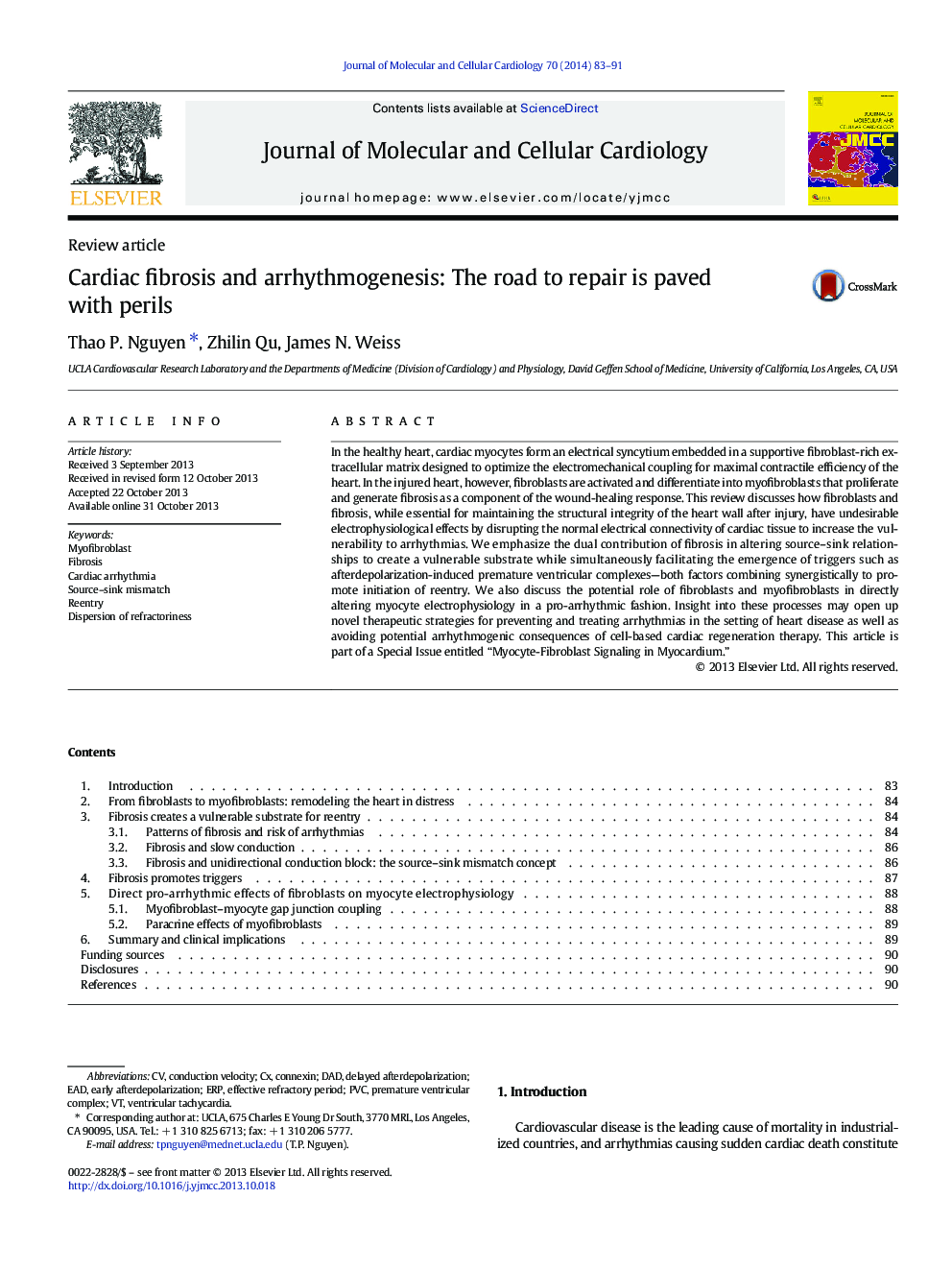| Article ID | Journal | Published Year | Pages | File Type |
|---|---|---|---|---|
| 8474918 | Journal of Molecular and Cellular Cardiology | 2014 | 9 Pages |
Abstract
In the healthy heart, cardiac myocytes form an electrical syncytium embedded in a supportive fibroblast-rich extracellular matrix designed to optimize the electromechanical coupling for maximal contractile efficiency of the heart. In the injured heart, however, fibroblasts are activated and differentiate into myofibroblasts that proliferate and generate fibrosis as a component of the wound-healing response. This review discusses how fibroblasts and fibrosis, while essential for maintaining the structural integrity of the heart wall after injury, have undesirable electrophysiological effects by disrupting the normal electrical connectivity of cardiac tissue to increase the vulnerability to arrhythmias. We emphasize the dual contribution of fibrosis in altering source-sink relationships to create a vulnerable substrate while simultaneously facilitating the emergence of triggers such as afterdepolarization-induced premature ventricular complexes-both factors combining synergistically to promote initiation of reentry. We also discuss the potential role of fibroblasts and myofibroblasts in directly altering myocyte electrophysiology in a pro-arrhythmic fashion. Insight into these processes may open up novel therapeutic strategies for preventing and treating arrhythmias in the setting of heart disease as well as avoiding potential arrhythmogenic consequences of cell-based cardiac regeneration therapy. This article is part of a Special Issue entitled “Myocyte-Fibroblast Signaling in Myocardium.”
Keywords
Related Topics
Life Sciences
Biochemistry, Genetics and Molecular Biology
Cell Biology
Authors
Thao P. Nguyen, Zhilin Qu, James N. Weiss,
